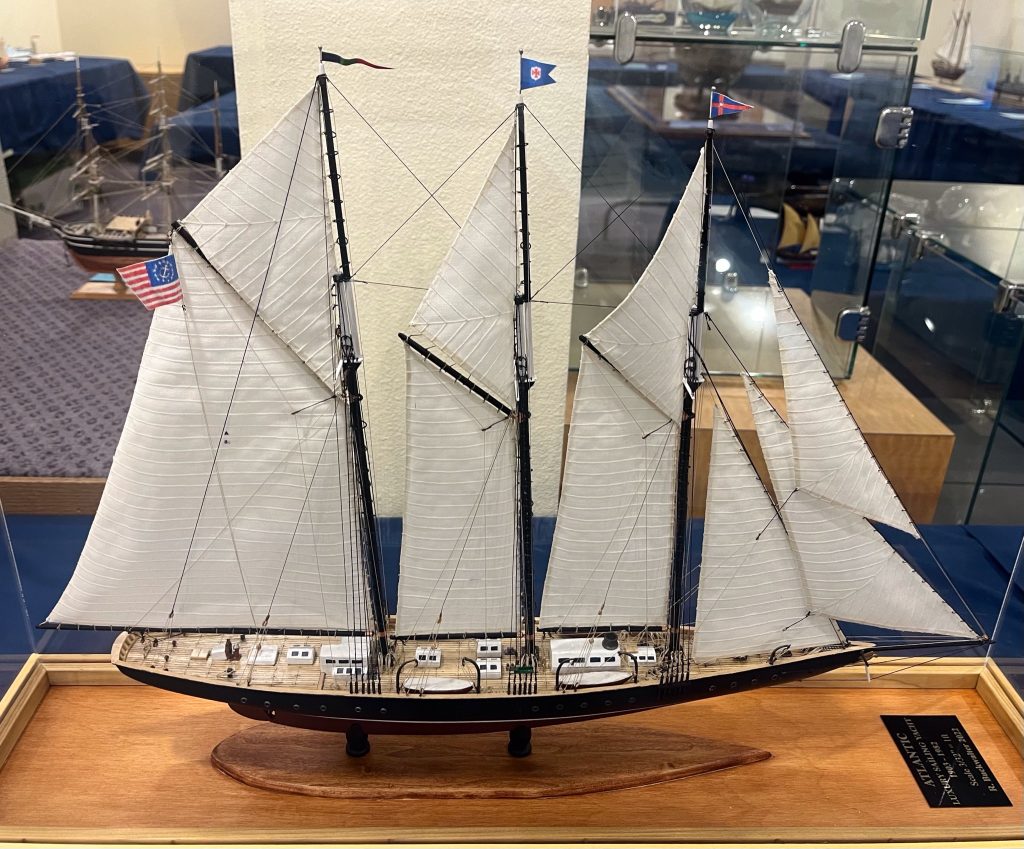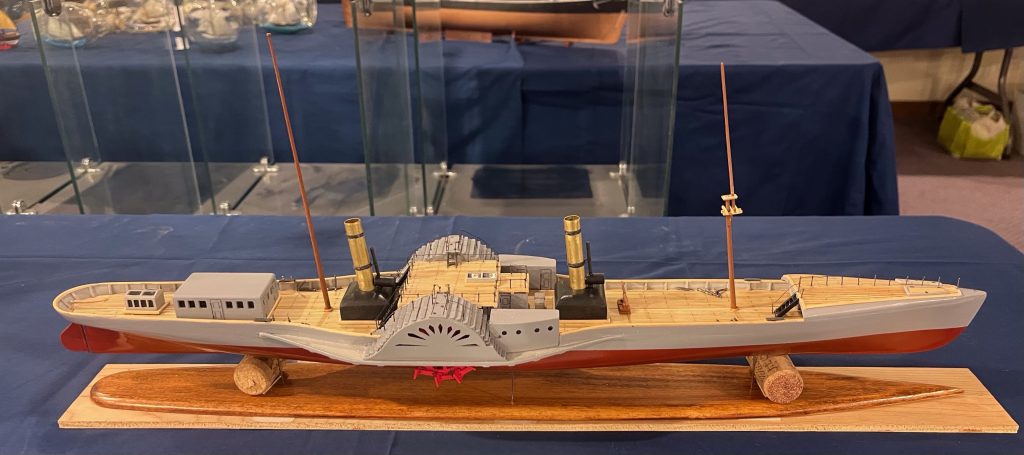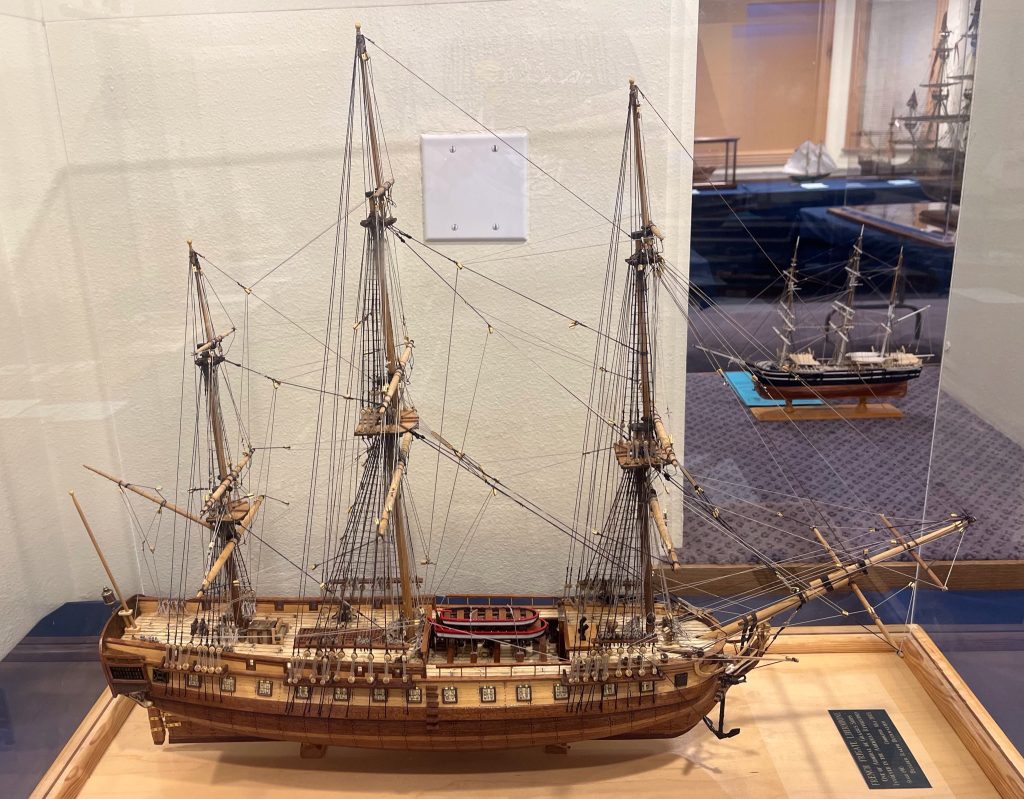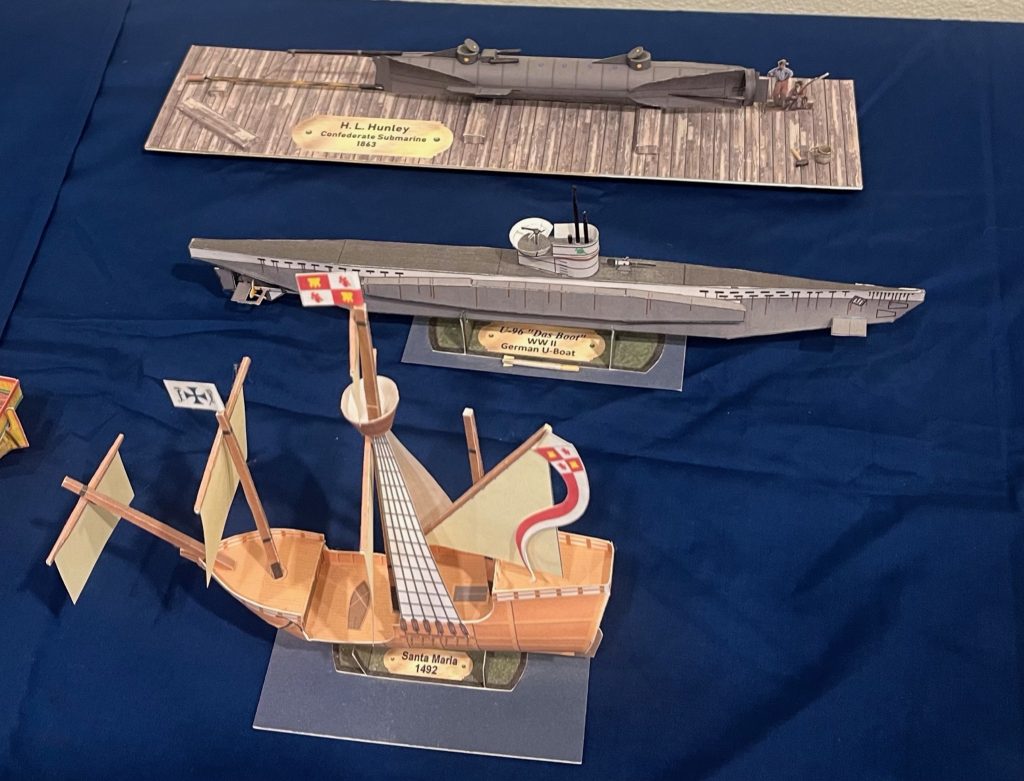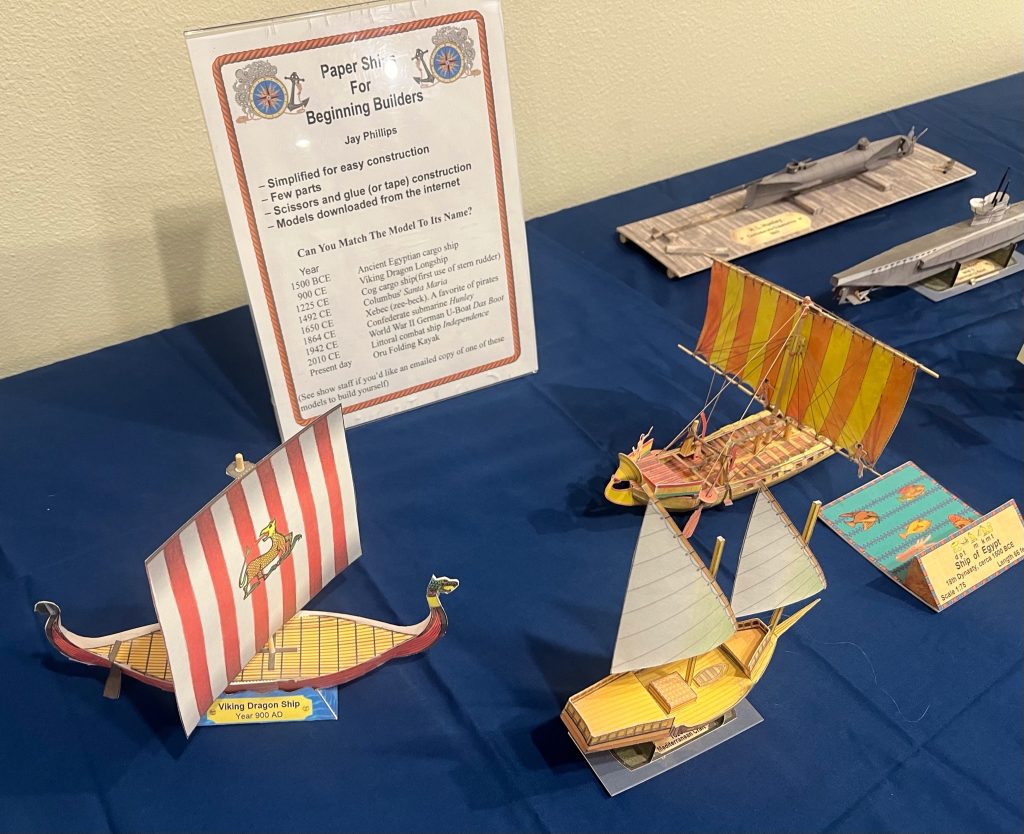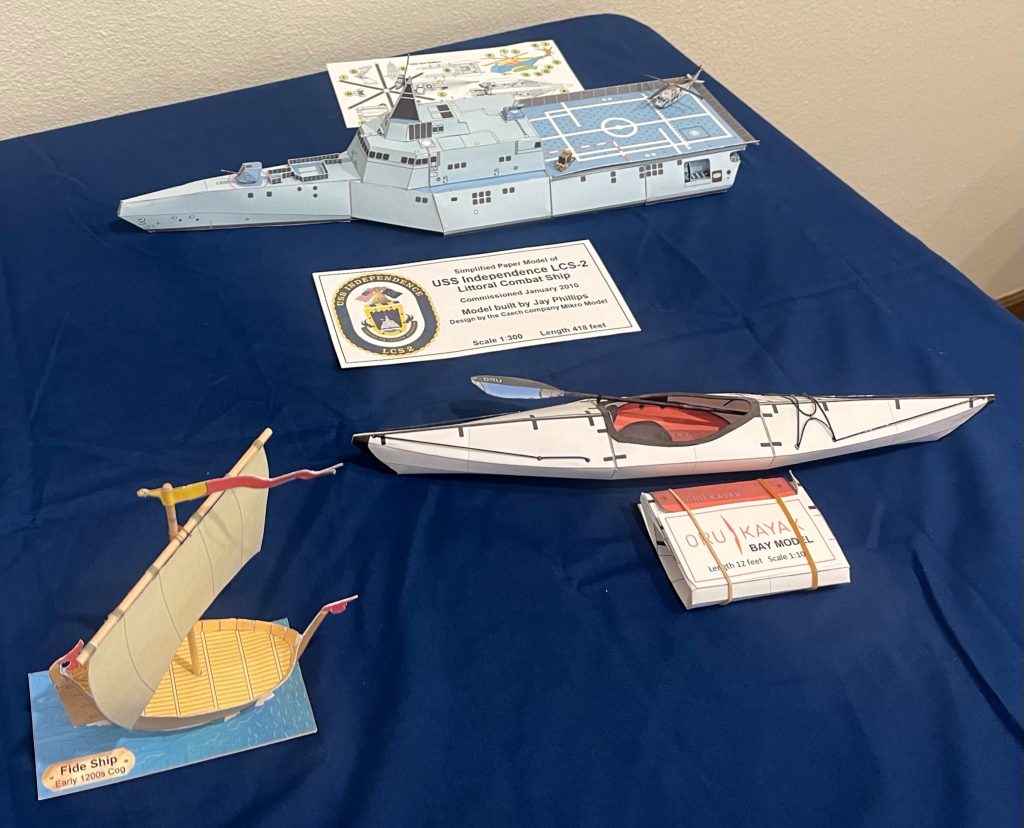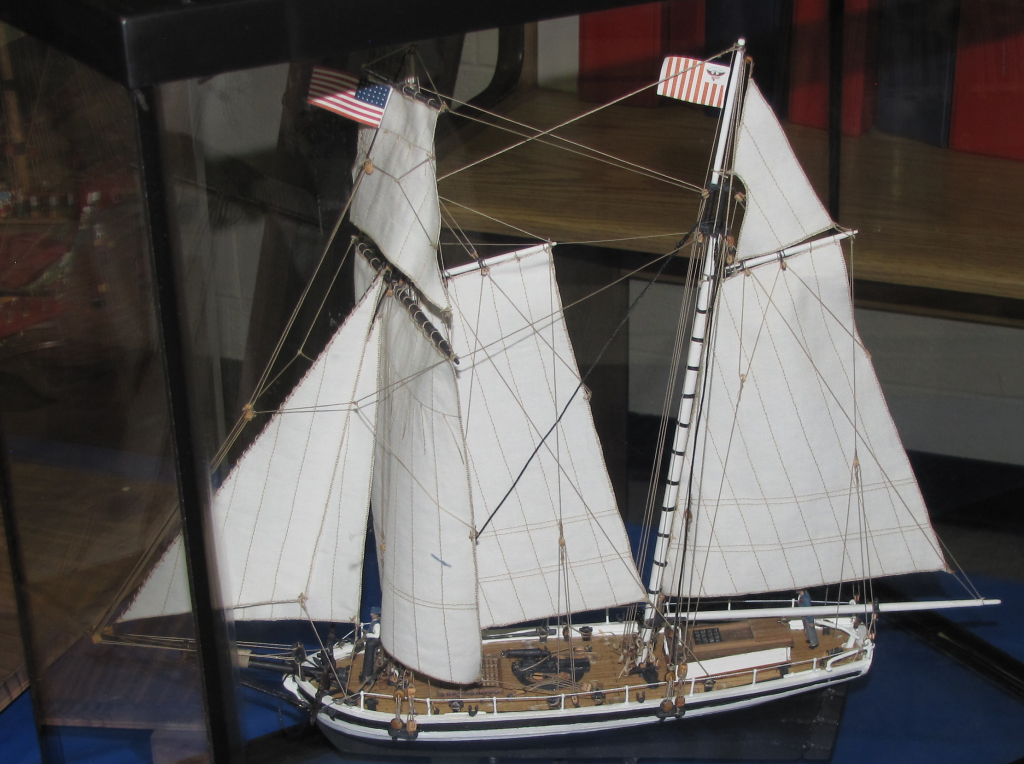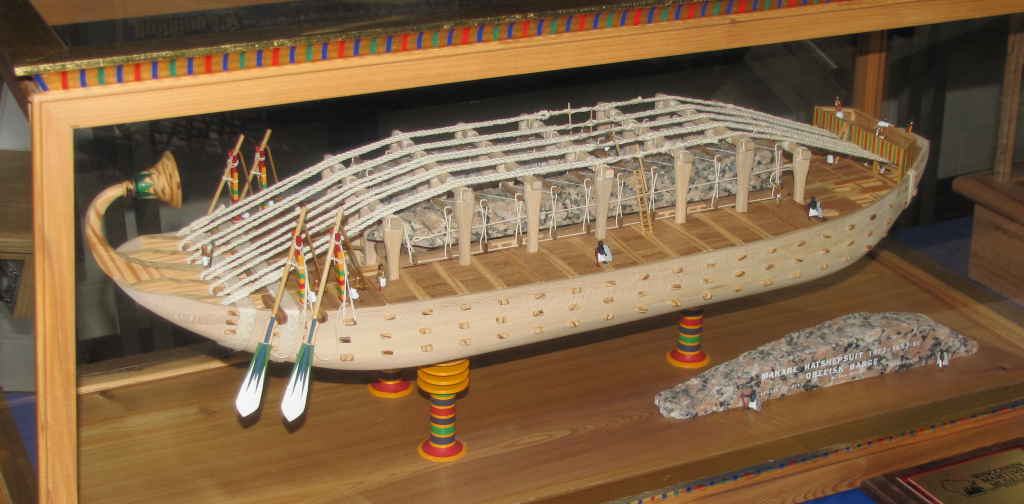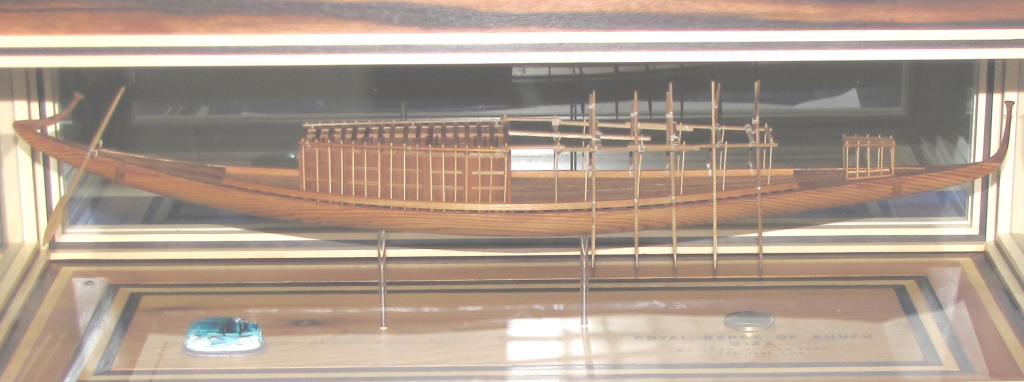
Period Ship Sailed: 1903 – 1909
Type of Model: Scratch waterline
Build Time: About 8 months
Scale: 1” = 32’
Description of build: The model has a solid basswood hull and basswood deck houses with paper overlays for the cut-out windows. The decks are holly and the funnel is brass. The masts are wood turned to a pater. The boats are carved wood and the rigging is copper wire. The rails and stairs are photoetched brass. The model was built from plans drawn by Mr. Fivehouse based on the original rigging plan supplied by the builders.
Ship’s History: The Republic was built by Marland & Wolff in Belfast, Northern Ireland in 1903 as the Columbus for the Dominion Line service to Boston. Her main particulars were: Length = 570’ Breadth – 67.8’.
After only three voyages she was switched to the White Star Line and renamed Republic for the service from Boston and New York to the Mediterranean (usually Genoa, Italy). She was on such a voyage in 1909 when on January 23, after leaving New York, she was rammed in the port side amidship by the Italian line Florida in heavy fog just off the Nantucket lightship. Her wireless operator made the first known call for help using a radio and and number of ocean liners leaving New York. An attempt was made to tow her to shore but the next day she sank. She was the largest ship in the world to sink prior to the Titanic.
Her wreckage has been located in about 270’ of water. She was purported to have had gold on board worth 1.6 billion dollars by today’s (2023) value. The has not yet been recovered but more about the Republic can be found at Treasure of the RMS Republic

